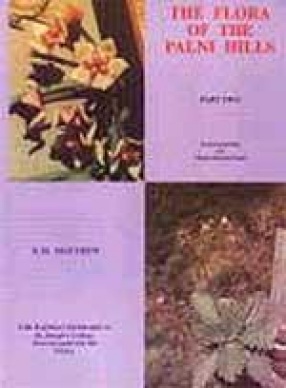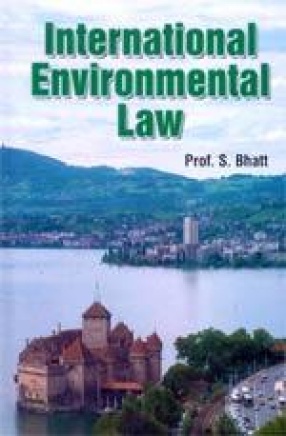This 3-part text of the Flora of the Palni hills (c. 2,500 species) completes the author's efforts for quarter of a century (1976-1999) at achieving a critical, illustrated Flora of Tamilnadu State, in two phases. This is the second phase: the montane counterpart of phase one that covered the lowlands. The Palni hills, part of the western ghats of India and one among the 25 biodiversity hotspots of the planet, are a marker zone: changes in plant population dynamics, especially stress on, or extinction of, indigenous species, over a short period here are a true indication of what is happening in larger areas over longer periods. This Flora provides an accurate knowledge of the component species, with emphasis on the conservation status of those under stress. Some salient features may be noted. (1) Original study of ample material, both from new exploration (323 field days, 14,907 new collections), as also from former collections in herbaria in India and Kew, all cited in the text; that 29% of the species are aliens that needed international assistance for accurate determination, is a special feature. (2) Nomenclature updated in the light of current work. (3) Use of an international style of citation of books (TL-2) and periodicals (B-P-H) (Appendices III & IV). (4) 1,223 full-page, detailed illustrations complementing those of phase one, so that over 95% of the included species have been illustrated. (5) Comprehensive field notes in a comparable, 2-para format throughout. (6) Original information on the conservation status of plants under stress; Appendix VI with germination data for 255 of the native shola species is a valuable feature. It is hoped that this work will efficiently serve the incoming century as did Fyson's South Indian hill Floras (1915-1932) during the outgoing one.
The Flora of the Palni Hills, South India (In 3 Volumes)
by K.M. Matthew
$148.50
$165.00
In stock
Free & Quick Delivery Worldwide
All orders amounting to US$ 50 or more qualify for Free Delivery Worldwide. For orders less than US$ 50, we offer Standard Delivery at $14 per book.
ABOUT THE AUTHOR K.M. Matthew
K.M. Matthew, S.J., F.L.S. is the Director both of The Rapinat Herbarium, Tiruchirapalli (Research base), and of The Anglade Institute of Natural History, Shembaganur, Kodaikanal (Environmental base). Apart from University teaching and research, the lion’s share of his efforts went into the 10-part Flora of the Indian Peninsula east of the Western Ghats, 1976-96, involving over 1,000 field days and 50,000 new collections. The Excursion Flora in English (1991, 1995) and Tamil (1993) was a ‘lab to land’ effort to make the fruits of research reach ordinary people, a door delivery of knowledge. A 3-day, round-the-year, gratis environmental awareness generation programme from The Anglade Institute of Natural History, Shembaganur, Kodaikanl, that has handled over 35,000 trainees since 1984 (students and villagers) has been our best environmental contribution todate. Shola is the bi-annual newsletter that has been appearing regularly since 1988. Environmental research, especially on conservation of rare and endangered plants on which much original information has been collected during field work in recent years, should receive more attention on completion off the Flora volumes in 1997.
reviews
0 in total
Review by Anonymous
Be the first to review “The Flora of the Palni Hills, South India (In 3 Volumes)” Cancel reply
You must be logged in to post a review.
Bibliographic information
Title
The Flora of the Palni Hills, South India (In 3 Volumes)
Author
Edition
1st ed.
Publisher
ISBN
8190053930
Length
xcvi+1880p., Figures; Maps.
Subjects
more by K.M. Matthew see more
similar bookssee more
Psychological Consequences in Intractable Diseases and Depression
The book has been written in ...
$44.10
$49.00
Industrial Psychology
$67.50
$75.00






There are no reviews yet.